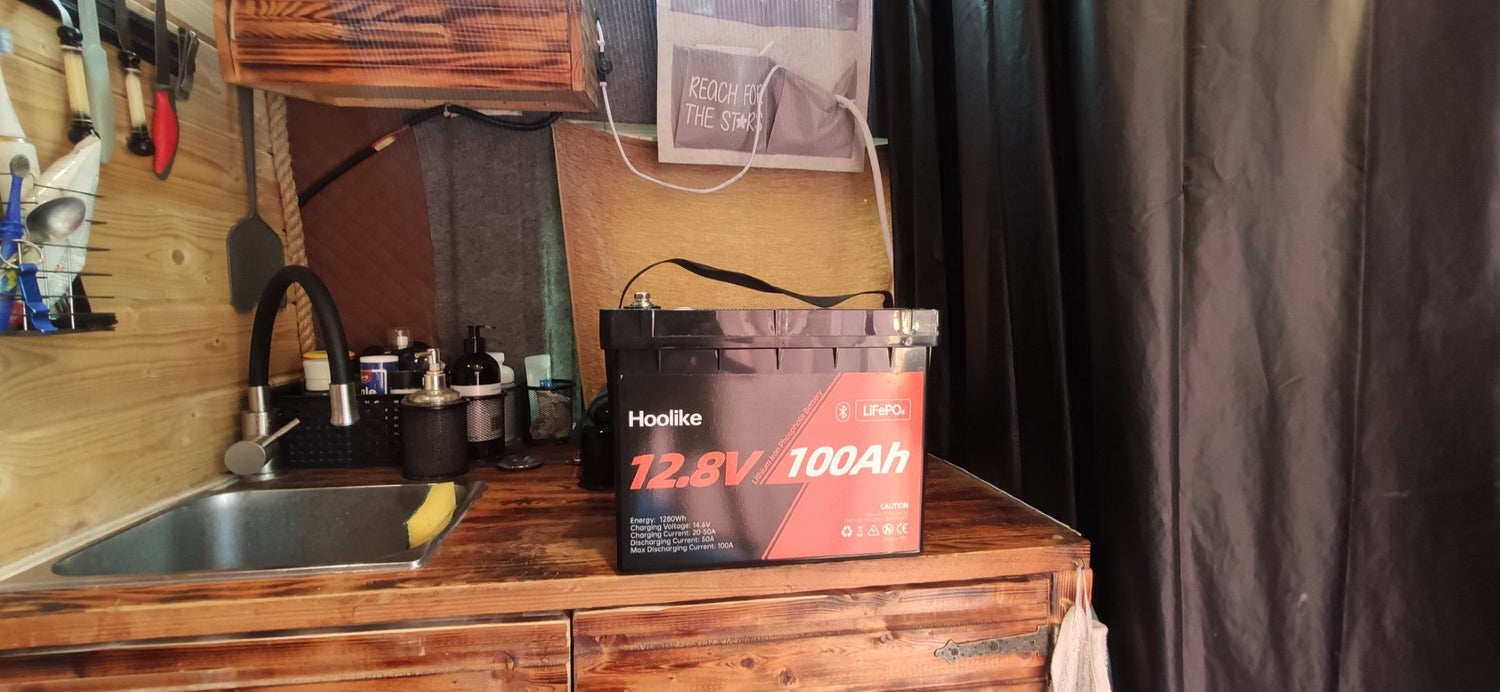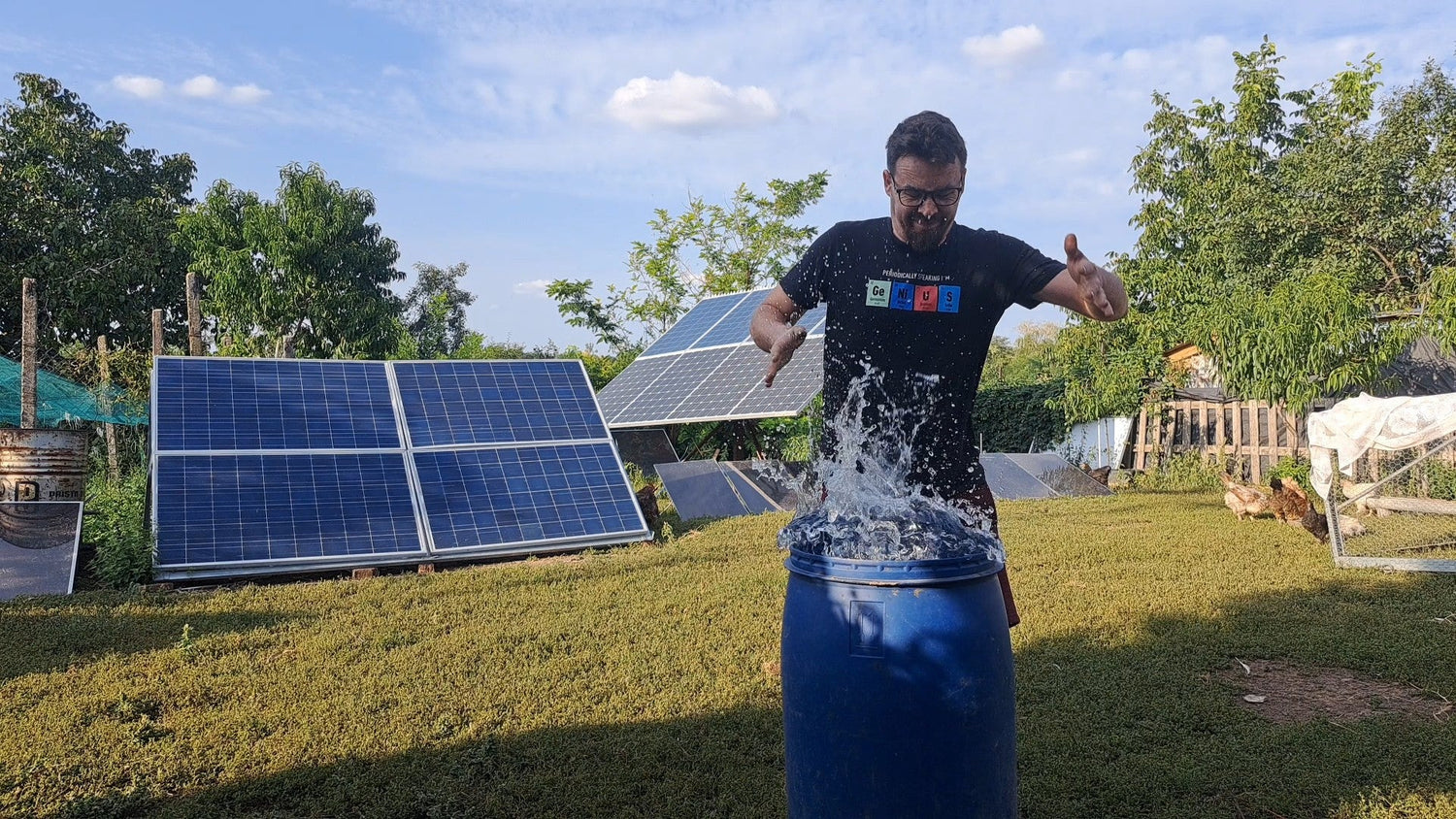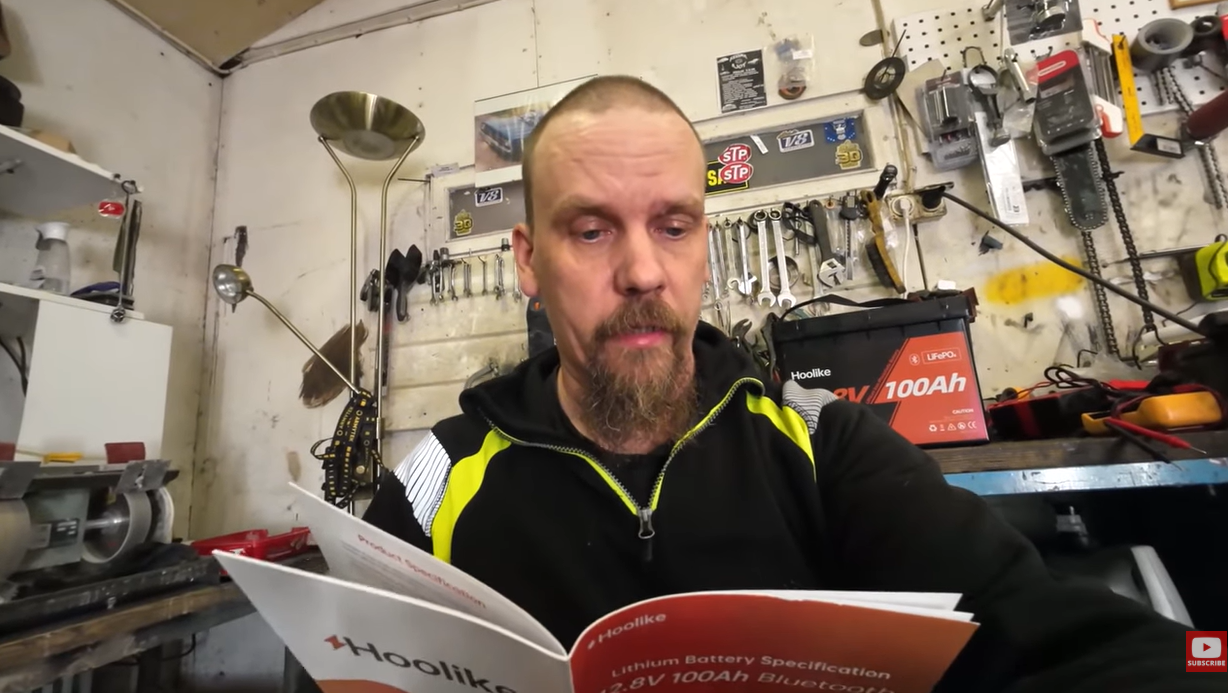Prelude
As Europe accelerates its transition toward a carbon-neutral future, energy storage is becoming a crucial element in achieving sustainability and efficiency. The European Union (EU) has set ambitious decarbonization targets, aiming for net-zero emissions by 2050. To support this transformation, innovative battery technologies like LiFePO4 (Lithium Iron Phosphate) batteries are playing a key role in the shift from fossil fuels to renewable energy.
The Need for Decarbonization in Europe
Europe’s decarbonization goals are driven by the need to reduce greenhouse gas (GHG) emissions, enhance energy security, and transition to clean energy sources. The EU has implemented several key initiatives, such as:
The European Green Deal aims for a climate-neutral economy by 2050.
The Fit for 55 package, which seeks to cut emissions by 55% by 2030.
The Renewable Energy Directive (RED II), which mandates higher renewable energy adoption.
To meet these objectives, Europe must replace fossil-fuel-dependent energy systems with reliable, efficient, and sustainable storage solutions—a role that LiFePO4 batteries are well-suited to fill.

Why LiFePO4 Batteries?
1. Sustainability and Environmental Benefits
Unlike traditional lead-acid and lithium-ion batteries, LiFePO4 batteries are:
-
Cobalt-Free, reducing reliance on ethically and environmentally questionable raw materials.
-
Long-lasting, capable of over 4,000–6,000 charge cycles, minimizing waste.
-
Non-toxic, with no risk of thermal runaway, making them safer for energy storage.
2. Supporting Renewable Energy Storage
Europe’s energy mix is shifting rapidly towards solar, wind, and hydropower, requiring efficient storage systems to manage fluctuations in supply and demand. Unlike fossil-fuel-based energy production, renewable energy sources are intermittent—solar panels generate electricity only when the sun is shining, and wind turbines depend on wind conditions. Without a reliable energy storage solution, excess energy generated during peak production periods is wasted, while shortages occur when energy demand exceeds supply. LiFePO4 batteries provide an efficient way to store surplus renewable energy, ensuring that it can be deployed when needed, whether during nighttime hours, cloudy days, or periods of low wind activity. Their high energy density and deep discharge capabilities make them ideal for large-scale energy storage applications, allowing households, businesses, and power grids to maximize their use of clean energy. By reducing over-reliance on fossil fuels for backup power, LiFePO4 battery technology significantly lowers carbon emissions and supports Europe’s climate neutrality goals.
Furthermore, LiFePO4 batteries enhance grid stability, a critical aspect of Europe’s transition to a decentralized and resilient energy infrastructure. As more renewable energy sources are integrated into the grid, there is a greater need for storage systems that can quickly absorb and release power, balancing energy supply and demand fluctuations in real-time. LiFePO4 batteries play a crucial role in stabilizing the grid, preventing power disruptions and reducing the need for costly and polluting peaker plants that rely on fossil fuels to compensate for short-term energy shortages. Additionally, they support microgrid and off-grid applications, enabling communities in remote and rural areas to access reliable renewable energy without dependence on traditional power grids. As Europe continues to push for renewable energy adoption and energy independence, LiFePO4 batteries are emerging as a key enabler of a cleaner, more efficient, and more sustainable energy ecosystem.
3. Electrification of Transportation
With the EU pushing for an end to internal combustion engine (ICE) vehicles by 2035, the demand for safe, high-performance batteries is growing at an unprecedented pace. The transition from fossil fuel-powered vehicles to electric mobility is a critical step toward achieving carbon neutrality and reducing air pollution in European cities. However, one of the biggest challenges in the widespread adoption of electric vehicles (EVs) and public transport electrification is the need for efficient, long-lasting, and reliable battery technology. LiFePO4 batteries have emerged as the ideal choice for this shift due to their high energy density, deep discharge capacity, and superior thermal stability, ensuring that EVs can operate efficiently while maintaining high levels of safety. As more European countries invest in EV incentives, charging infrastructure, and sustainable urban mobility solutions, LiFePO4 battery technology is playing a crucial role in making electric transportation more accessible, practical, and sustainable.

LiFePO4 batteries provide significant advantages over traditional lithium-ion and lead-acid batteries, making them particularly well-suited for electric cars, buses, trucks, and fleet vehicles. Their faster charging capabilities allow EV owners and public transport operators to reduce downtime and maximize vehicle availability, ensuring seamless travel and efficient logistics. Additionally, LiFePO4 batteries offer a significantly longer lifespan, capable of enduring 4,000–6,000 charging cycles or more, reducing the frequency of battery replacements and lowering the overall cost of ownership. Unlike standard lithium-ion batteries that contain cobalt, which has ethical and environmental concerns related to its mining, LiFePO4 batteries use more abundant and safer materials, aligning with the EU’s sustainability goals. These characteristics make them particularly appealing for commercial EV fleets, last-mile delivery services, and municipal transportation systems, where long-term performance and durability are key factors in reducing operational costs and environmental impact.
Moreover, LiFePO4 batteries enhance the safety of electric transportation, addressing concerns related to thermal runaway, overheating, and fire risks that have been associated with conventional lithium-ion batteries. Their stable chemical structure and high resistance to extreme temperatures ensure that EVs can operate safely under varying climate conditions, from the freezing winters of Scandinavia to the hot summers of Southern Europe. This reliability is crucial for public transport networks, emergency response vehicles, and heavy-duty electric trucks, which require consistent and dependable power output to function optimally. As Europe continues to expand its EV charging networks and green transportation policies, LiFePO4 batteries are set to play a pivotal role in the future of electric mobility, enabling safer, more efficient, and environmentally friendly transportation solutions.
4. Industrial and Residential Energy Storage
From large-scale industrial applications to home energy backup systems, LiFePO4 batteries provide cost-effective, reliable, and low-maintenance solutions for:
-
Residential solar power storage.
-
Industrial grid balancing and peak shaving.
-
Smart microgrid solutions that enhance energy independence.
5. Smart Grids and Energy Independence
Europe is moving towards a decentralized energy grid, where homes, businesses, and entire communities can generate and store their own power, reducing dependence on centralized fossil-fuel-based utilities. This shift is being driven by advancements in renewable energy technologies, government incentives for solar and wind installations, and the increasing affordability of battery storage systems. However, for decentralized grids to function effectively, they require high-performance energy storage solutions that can store excess electricity and release it when needed. LiFePO4 battery systems have emerged as the preferred choice due to their long lifespan, deep discharge capabilities, and high energy efficiency. By enabling households, commercial buildings, and industrial facilities to store solar and wind-generated power, these battery systems help create a more self-sufficient energy ecosystem that is less vulnerable to grid failures and external disruptions.
Beyond just energy storage, LiFePO4 batteries also empower consumers to become active participants in the energy market, contributing to a more resilient and dynamic grid infrastructure. With smart grid technologies and peer-to-peer energy trading platforms, individuals can sell excess electricity back to the grid or share it with neighboring users, reducing overall energy costs and improving grid efficiency. Additionally, microgrid systems powered by LiFePO4 batteries allow communities, businesses, and industrial parks to operate independently, especially in remote areas or regions prone to power outages. This decentralized approach not only enhances energy security but also reduces reliance on expensive and environmentally damaging coal and gas-fired power plants. As European governments continue to invest in smart grid development, LiFePO4 batteries will play a vital role in optimizing energy distribution, reducing energy waste, and making decentralized grids a mainstream reality.
Furthermore, energy independence is becoming a critical priority in the face of geopolitical uncertainties, rising electricity prices, and climate change-related disruptions. Countries are looking to reduce their reliance on imported fossil fuels and strengthen their local energy resilience. LiFePO4 battery storage systems ensure that homes, businesses, and communities can maintain uninterrupted access to electricity, even during grid outages or peak demand periods. Unlike lead-acid batteries, which require frequent maintenance and have limited energy storage capabilities, LiFePO4 batteries offer a low-maintenance, highly efficient, and long-term solution for achieving true energy independence. As Europe accelerates its transition toward clean and sustainable energy, the widespread adoption of LiFePO4 battery-powered smart grids will be instrumental in creating a more decentralized, self-sufficient, and carbon-neutral energy future.
Hoolike: Advancing Europe’s Clean Energy Future
As demand for sustainable battery solutions rises, Hoolike is committed to delivering high-quality, efficient, and durable LiFePO4 batteries that align with Europe’s ambitious decarbonization objectives. The transition to renewable energy and electrification is accelerating, with industries, governments, and consumers all seeking reliable energy storage technologies that can support a carbon-neutral future. Hoolike’s LiFePO4 batteries stand out due to their long lifespan, deep discharge capabilities, and superior energy efficiency, making them a cost-effective and eco-friendly alternative to traditional battery chemistries. By investing in cutting-edge battery technology, Hoolike ensures that its energy storage solutions remain at the forefront of Europe’s clean energy revolution, helping to reduce reliance on fossil fuels, lower greenhouse gas emissions, and improve overall energy security.

Whether for EVs, solar energy storage, or industrial power backup, Hoolike’s batteries are engineered for maximum performance and reliability. In the electric vehicle (EV) market, where battery efficiency, safety, and durability are crucial, Hoolike’s LiFePO4 batteries provide faster charging times, greater energy output, and enhanced safety features, ensuring smoother and more sustainable mobility solutions. In the solar energy sector, homeowners and businesses rely on Hoolike’s battery storage systems to store excess power generated during peak sunlight hours and use it when needed, promoting energy independence and grid stability. Meanwhile, for industrial power applications, Hoolike’s high-capacity LiFePO4 batteries provide uninterrupted power supply, ensuring that critical operations can continue even during grid outages or peak demand periods. With an increasing number of European governments implementing renewable energy policies and incentives, Hoolike’s LiFePO4 technology is becoming an essential component in accelerating Europe’s transition toward sustainable power solutions.
Beyond providing innovative battery technology, Hoolike is also actively contributing to Europe’s clean energy ecosystem through sustainable manufacturing practices, recycling initiatives, and strategic industry partnerships. By eliminating cobalt and other toxic heavy metals from its battery compositions, Hoolike supports ethical and environmentally responsible supply chains that reduce the environmental footprint of battery production. Additionally, the company is working with European energy firms, EV manufacturers, and industrial leaders to integrate LiFePO4 battery solutions into smart grids, public transportation systems, and large-scale renewable energy projects. As the push for clean energy and decarbonization intensifies, Hoolike continues to drive innovation, sustainability, and efficiency in the energy storage sector, ensuring that Europe’s transition to a green and resilient energy future is both seamless and impactful.
Endnote
Europe’s decarbonization journey requires innovative energy storage technologies that align with its ambitious climate goals. LiFePO4 batteries provide the safety, longevity, and efficiency needed to support renewable energy adoption, grid stability, and the electrification of transportation.
Looking for a reliable energy storage solution? Explore Hoolike’s LiFePO4 batteries and power your future with sustainable energy today!





